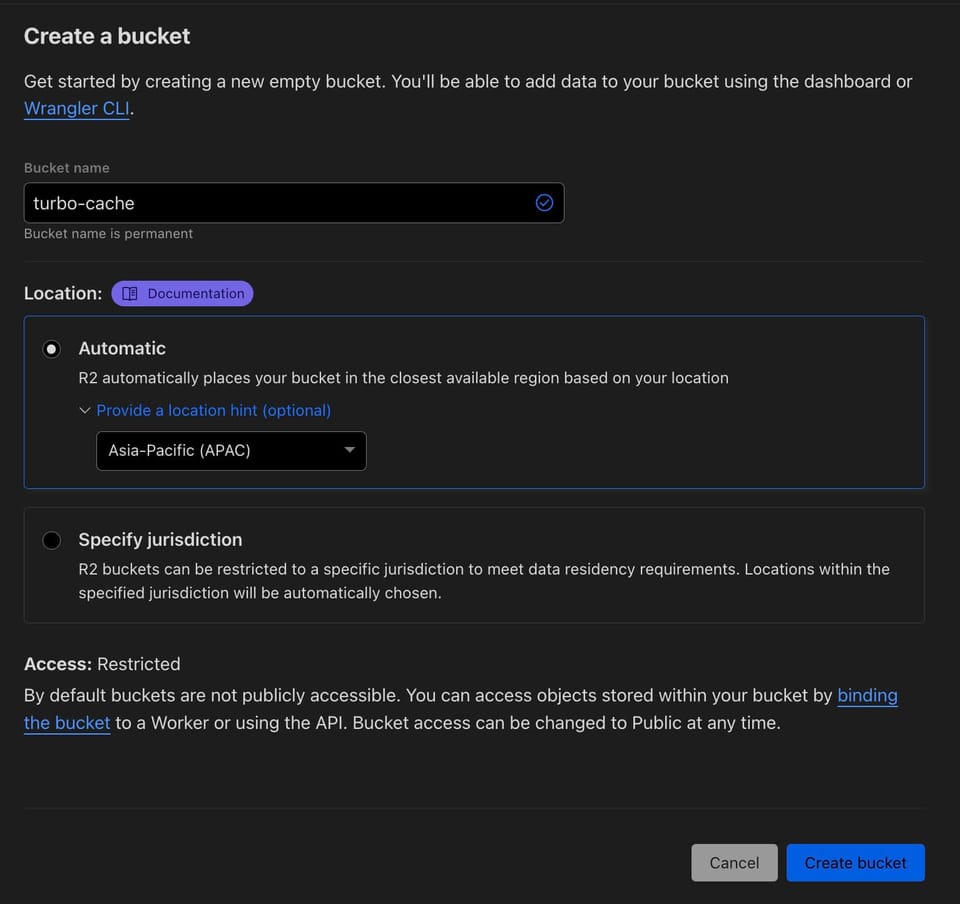🪣 Storing artifacts in Cloudflare R2
Cloudflare R2 offers scalable, low-cost object storage ideal for storing build artifacts globally. With R2, you can leverage Cloudflare's global network for quick access and efficient management of your build artifacts.
Follow these steps to store your build artifacts in Cloudflare R2:
1. Create an R2 Bucket
An R2 bucket is a container for objects in Cloudflare R2. You can create a bucket via the Cloudflare dashboard or using the Wrangler CLI
Using the Wrangler CLI
wrangler r2 bucket create YOUR_BUCKET_NAMETIP
Using the Wrangler CLI to create a bucket will result in the bucket being created in a region closest to you.
It is worth considering the region in which you create your bucket, as workers spun up father away from the bucket's region will experience higher latency.
In order to create a bucket in a specific region, you will have to use the Cloudflare dashboard.
TIP
If you have true multi-region requirements, consider using Cloudflare KV as the store. Read the next page to find out how.
Using the Cloudflare Dashboard
- Navigate to the cloudflare dashboard and select the
R2tab on the left-hand side bar. - Click the
Create Bucketbutton. - Enter a name for your bucket and select the region in which you would like to create the bucket.

- Click
Create Bucket.
TIP
Try picking a region closest to where the bulk of your API requests will be coming from. E.g if you want to optimize for requests coming from Github actions in the US, pick a US region.
You can find the list of regions and their codes here.
2. Update Your Configuration
Update your wrangler.jsonc file to include the R2 bucket details.
{
"name": "turborepo-remote-cache",
// Other settings...
"r2_buckets": [
{
"binding": "R2_STORE",
"bucket_name": "your-bucket-name",
"preview_bucket_name": "your-preview-bucket-name"
}
],
// "kv_namespaces": [
// {
// "binding": "KV_STORE",
// "id": "ea20b0eb60f44b13b8d013eeace98ca2",
// "preview_id": "ea20b0eb60f44b13b8d013eeace98ca2"
// }
// ]
}INFO
If you want to use R2 as the store, ensure that the kv_namespaces section is commented out.
3. Deploy Your Worker
Once you've updated your Worker script and wrangler.jsonc file, deploy your Worker using the Wrangler CLI or your GitHub actions workflow. And that's it! Your build artifacts will now be stored in Cloudflare R2.
